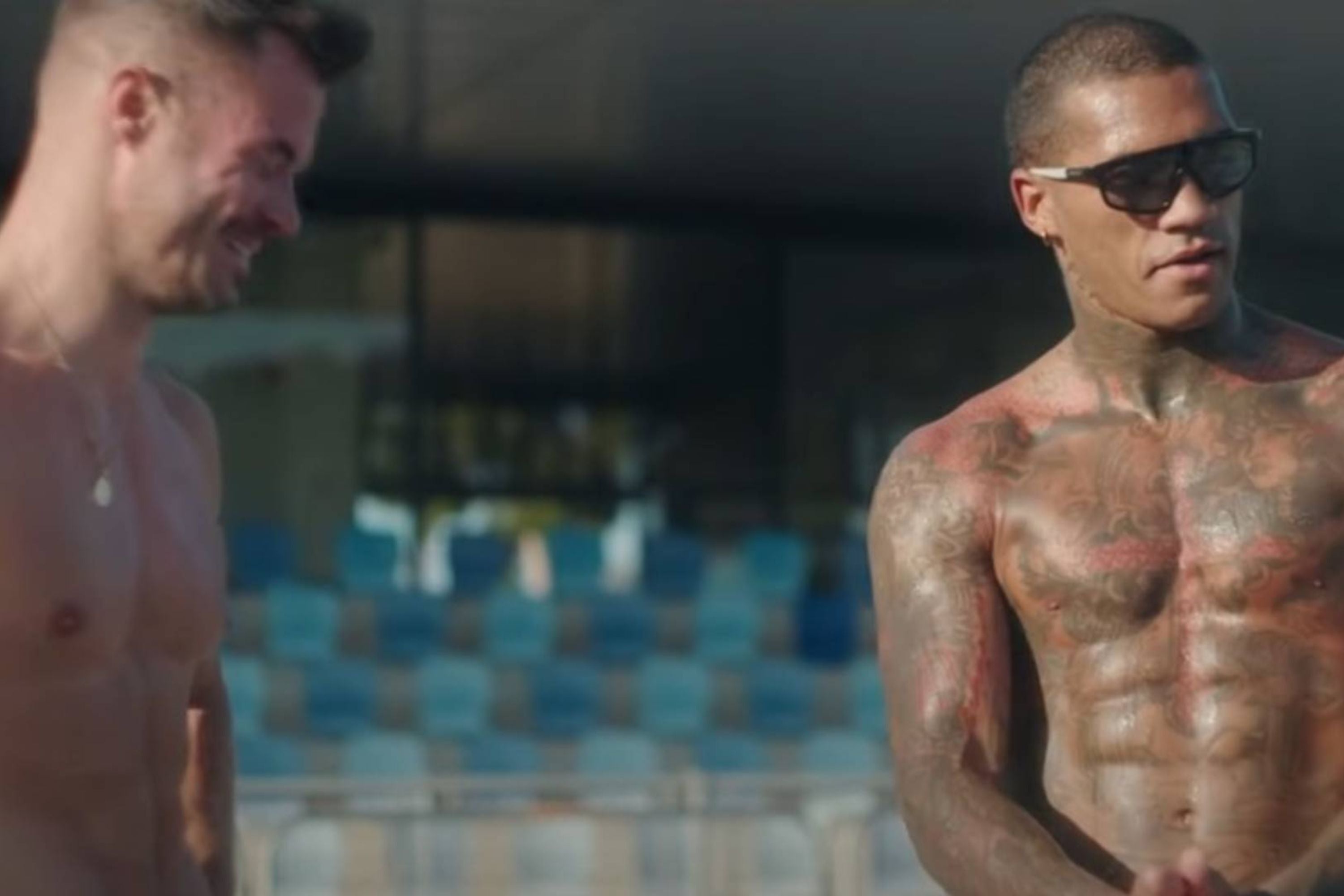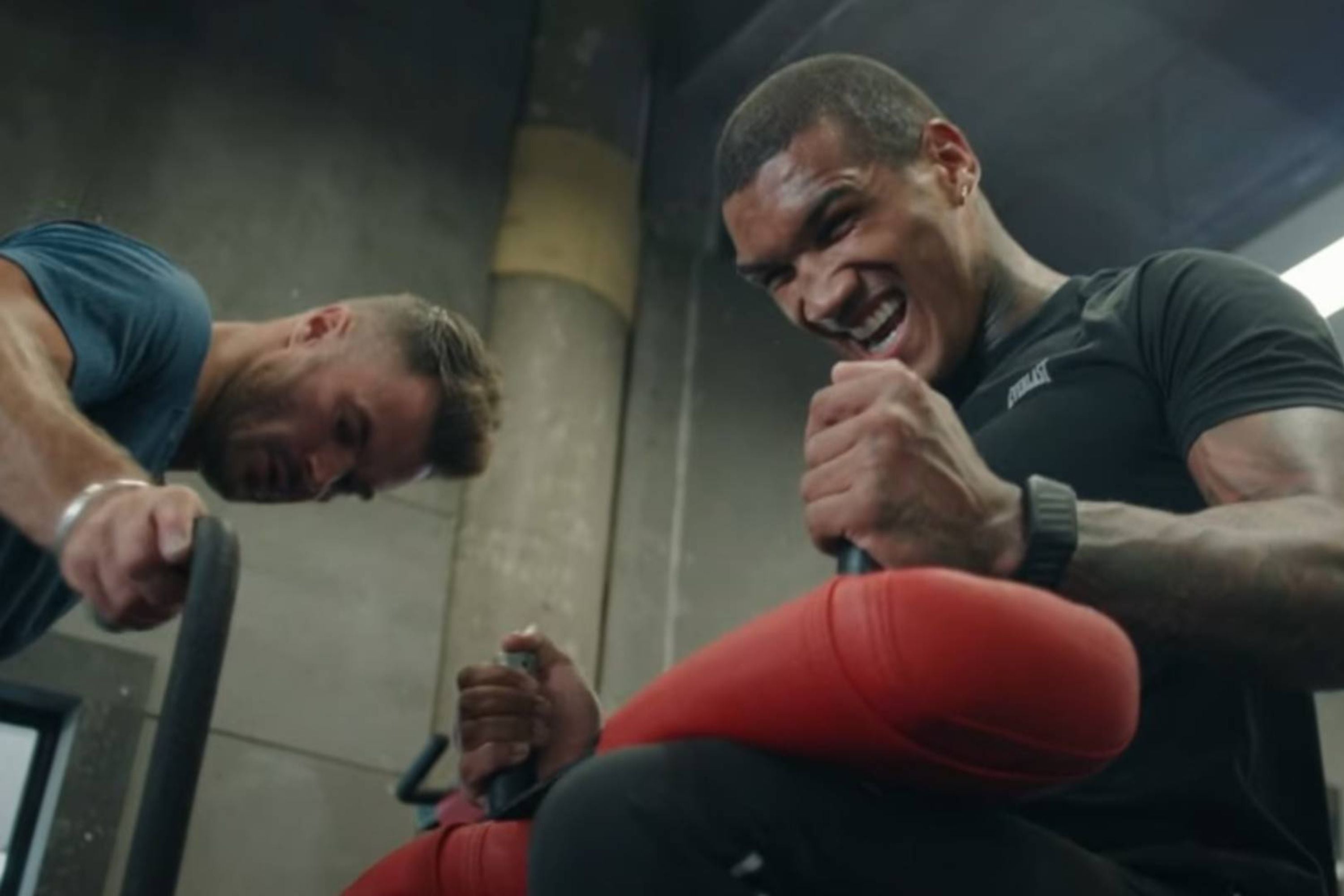Table of Contents
In the searing Spanish sun, Conor Benn glides around a running track. He eats up 300m in 41 seconds, walks for 100m, then repeats this sequence nine more times without dropping the pace.
Despite being significantly heavier than he’s used to, the would-be welterweight is quite literally fighting fit – and it’s just as well.
On Saturday, April 26, he faces Chris Eubank Jr in a middleweight clash steeped in hype and history.
As an added challenge, Benn had to pack on 13lb and move up two divisions in preparation for the fight, all while maintaining the speed and explosiveness that make him formidable.
“A boxer is a supreme athlete because they work across so many different disciplines from a physiological point of view,” Dan Lawrence, Benn’s strength and conditioning coach, tells me. “And Conor is a savage, high-octane athlete.”
Below, he reveals how Benn was able to gain weight, stay lean and, crucially, improve performance over the course of a 70-plus day training camp in Mallorca.
A week of Connor Benn’s training
Most people look at a week and see three, four or maybe even five opportunities to train. But Benn is an elite athlete, so Lawrence splits his days into AM and PM sessions so he can balance as many attributes as possible.
“A boxer isn’t like a powerlifter; someone who has to produce high amounts of force with no time constraints to get from point A to point B,” says Lawrence. “Boxing has an element of that; force production is important, as we know force times velocity equals power.
“But we also need to produce that force very quickly because we are under time constraints. That’s the difference between landing a shot and not landing a shot. So we surf the force-velocity curve, and that’s just one piece of the puzzle.
“Then we have energy systems – what goes on from a bioenergetic point of view. We know we can’t train like an endurance athlete because he needs high-intensity repeated bouts of exercise. Then he recovers, then he goes again.”
To ensure Benn remains a well-rounded athlete, while capitalising on his trademark power and explosiveness, this is what a typical training week looks like:

Monday AM: Weighted run
“This is generally 30 to 35 minutes of running with a weighted vest,” Lawrence says. “Conor is a savage so he’ll do that run early [most days he and his team are up at 5am], sleep, fuel; it’s really a case of eat, sleep, train, repeat.”
Monday PM: Sparring
“He’ll spar in the evening now,” says Lawrence. “We’ve moved our sparring times to later in the evening over the last couple of weeks to get accustomed to being ready at that time – that’s a key consideration of ours. His ring walk will be at about 9.50pm, so if we’re only training until 4pm or 5pm that’s problematic in terms of him being ready to go at that time.”
Tuesday AM: Steps session
Mallorca’s 600 Santa Ponsa steps are seen as a challenge among tourists, who sweat and struggle their way to the top at walking pace. Over the course of the training vamp, Benn and Lawrence have commandeered these steps for hill sprints.
Tuesday PM: Technical boxing
“This is where Conor will go through technical drilling with Tony Sims, the head coach.”
Wednesday AM: Sparring
Benn usually heads to the ring for 10.30am for a sparring session.
Wednesday PM: Strength and conditioning
Here, Lawrence again takes the lead, subjecting Benn to a series of strength and power-building protocols such as overcoming isometrics and the French contrast method – more on this below.
“Do we want high force from movements? Yes. But then we do strength-speed exercises, speed-strength exercises and high velocity unloaded exercises as well to enable him to become more explosive,” Lawrence explains.
Thursday AM: Track session
When he first arrived in Spain for the training camp, Benn did four rounds of a 300m run followed by a 100m walk.
“Tony said to Conor, ‘By the end of camp, I want you doing 10 of these’,” Lawrence says. “Conor thought there was no way that was going to happen, but lo and behold he did 10 of them last Thursday, in times that were far superior to when he did four at the start of camp.
“On the track he’s really impressed me. Biomechanically, the progression in the way he flows and the mechanics of his running has been really impressive to see.”
Thursday PM: Technical boxing
Friday AM: Recovery or a run
“Friday morning involves either recovery or a run based on training load management,” says Lawrence. “There have been times where we’ve given him full recovery based on the data.”
Friday PM: Sparring
Saturday AM: Run
“This would likely be a steady state run, which we do as a team.”
Saturday PM: Strength and conditioning
Sunday: Full recovery day
Benn has now entered a taper phase, which begins 10 days out from the fight. This involves maintaining a high training intensity while reducing total training volume by 30-60 per cent.
“The reason for that is to enable the athlete to peak on fight night, with all fatigue dissipated,” Lawrence explains. “Reducing training loads allows some supercompensation to occur, which means Conor will then peak above his baseline [performance] levels on fight night.”

Conor Benn: Diet
Lawrence summarises his approach under the banner: “Old school values, modern methods.”
It was these modern methods he turned to when helping Benn pack on 13lb of lean mass.
“We took him to My Vital Metrics to do a comprehensive physiological profile,” Lawrence says. Alongside performance-based assessments, he tested Benn’s resting metabolic rate (RMR, or the amount of calories he burns at rest) and completed a DEXA scan to reveal factors such as his body composition.
“Conor didn’t want to go to the lab, but he knew that we had to do it and it was a non-negotiable for me because otherwise we would have been going in blind,” says Lawrence.
“Looking at RMR, that gives us a baseline number, then we record the data from training. So let’s say in session one he expends 700 calories, in a second boxing session he may expend 1,200 calories, so his total output would be around 3,500, sometimes even 4,000 calories, per day.

“If we’re only consuming 3,000 calories, for a guy who’s stepping up 13lb and two weight classes, that’s going to be problematic. “
Using this data, Benn’s team builds a suitable nutrition plan, factoring in the optimal doses of protein, carbohydrates and fats to ensure his packing on mass optimally for his performance.
“He’ll be in either maintenance or a slight surplus of calories to ensure that his weight is good,” Lawrence says. “And his weight has been absolutely brilliant throughout camp. He checks his weight every single morning, feeds back to us, then we build a nutrition plan for that day.”
Conor Benn: Recovery
Speaking to Lawrence, the importance of data is clear. He even has the metrics from Benn’s Whoop band stream straight to his phone to monitor his sleep, recovery and readiness to train.
“There’s no guesswork here,” he says. “We use data to drive our decision-making processes – both subjective, aka ‘How are you feeling?’, ‘Are you sore?’, and also objective markers.
“This is how he merges his incredibly hard work – no one works harder than Conor – with smart work to enable us to reach our goals.”
One of the objective markers is neuromuscular readiness testing, which comes in the form of a daily vertical jump test. For this, Benn performs three max-effort countermovement (or vertical) jumps, and the results indicate his levels of fatigue.
“Conor’s PB on that currently is 58.6cm, which puts him in an elite range,” says Lawrence. “If he is 10 or 12 per cent down on his numbers, he may be in a slightly more fatigued state than we would like.

”Do we then take that as gospel, decide he can’t train and go home? Of course not. But it does mean we then have deeper conversations around how his sleep was last night. And if he’s had a poor night’s sleep, we identify why.”
This might be that Benn has eaten too late or his room is too hot. After one poor night’s sleep, his team even found themselves remedying a “pillow issue”.
“Sleep is the number one priority tool, and it costs absolutely nothing,” Lawrence says. “He’ll use saunas sporadically as well as massage, and there’s a physio out here. He also uses ProTec compression boots every day to promote blood flow and help recovery.”
The principle behind these constant data-driven tweaks is the “aggregation of marginal gains” – a term popularised by Ineos director of sport and esteemed cycling coach Sir Dave Brailsford.
“Getting one per cent better every day yields a 37-time improvement throughout the year,” Lawrence says.
Conor Benn: Workouts
“For Conor’s workouts we look at general physical qualities first, then we work in a bit more specificity as we draw closer to fight night,” Lawrence says.
“Do we want to become stronger? Yes. Do we want to become more powerful? Yes. Do we want to improve VO2 max? Yes, of course we do. All of these are going to help as general qualities, so we develop them.”
But on top of this, his workouts pay heed to the nuances and needs of the sport – specifically: developing strength, robustness and mobility in the neck, lower leg, mid-spine and shoulders.

“We do a lot of work around the lower leg,” Lawrence says. “We want him to be springy and reactive when pushing into the floor, so when he steps back he doesn’t bleed energy into the ground with his foot, but he can be springy and elastic like a kangaroo as opposed to being like a gorilla.
“We do a lot of work around the neck too. From a shot absorption point of view, obviously the goal is to not get caught, but it’s boxing, and you’re going to get caught. Conor’s stepping up in weight and we’ve got to be aware of that.
“And then we work the core. The core is a transfer centre, so we want to transfer energy to the fist through the kinetic chain. If all we ever do is old school ab crunches, it’s probably not going to cut it.”
However, given Benn’s calorie surplus, weight gain goal and high overall training load, Lawrence says he has the “luxury” of being able to add “bolt-ons” to his sessions.
“I want him to walk out of that gym feeling great, not beaten up,” Lawrence says. “I get what I need from a strength, power and robustness point of view, then at the end I’m absolutely fine with him doing a couple of sets of bicep curls so he goes out the gym feeling good.”
Conor Benn: Sample training day
Benn is in enviable shape, but building muscle isn’t a priority in his training. Instead, he needs a body that’s built for purpose, and that purpose is having his arm raised on April 26.
Here’s an example of the methods he uses to do just that:
- A warm-up using the RAMP protocol. Raise the heart rate, activate specific muscles, mobilise around key joints, then potentiate or prime the neuromuscular system to prepare for the training ahead.
- This involves mobilising the hips (“If he’s throwing his backhand, we want to be able to extend the glutes properly – if he’s tight through the opposite side of the anterior hip complex, he might lose power”) and performing exercises such as thoracic extensions and rotations.
- Activation sequences often work the glutes work and posterior shoulder.
- Neuromuscular readiness testing with countermovement jumps.
- “We’ve just gone through a block which focusses on both strength and power using the French contrast method,” says Lawrence. This is four exercises performed back to back – this might be heavy (180kg) quarter squats, followed by squat jumps, then a loaded jump to develop strength-speed, and finally an over-speed exercise like assisted jumps using a resistance band.
“Conor has a very high training age, he has lots of strength and conditioning experience, so he’s able to do something like French contrast method which is incredibly hard,” says Lawrence.
“There are not many fighters I’d be putting through that. The demand on the neuromuscular system is incredibly high, which is why the athlete must have a high training age to reap the rewards from that kind of system. But Conor adapts really well to it.”

